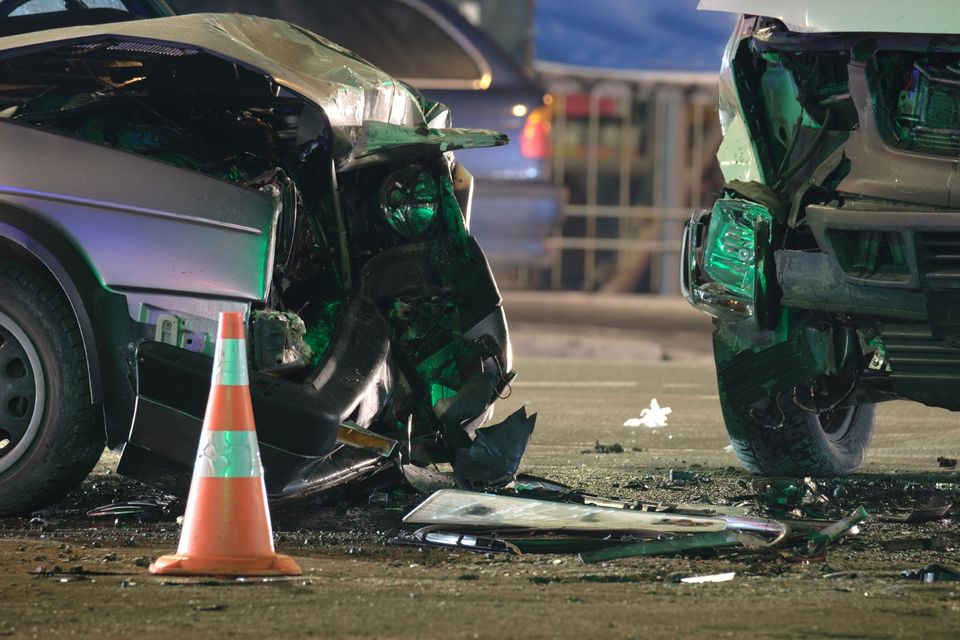Number of serious injuries on roads is almost double the official figures
Accidents not reported to gardaí and non-apparent injuries have skewed old data
Hospital data helped shed a light on the true number of injuries. Stock photo: Getty
The number of people seriously injured in road traffic accidents is almost double the figure previously recorded, according to research undertaken by the Road Safety Authority (RSA).
Using hospital data as well as garda figures, it shows that over the period 2014 to 2022, a total of 18,021 casualties were hospitalised with injuries from road traffic collisions.
Over the same period, the number of seriously injured casualties recorded by An Garda Síochána (AGS) and reported in official statistics by the RSA was 10,687.
The data highlighted a significant discrepancy in the number of cyclist injuries, in particular, at between two and three times the rate of garda reporting.
Cyclists accounted for 27pc of hospitalised casualties and 18pc of garda-logged serious injuries.
Irish road deaths have soared 45pc above 2023 levels
The research was conducted by the RSA in conjunction with the HSE and Trinity College Dublin, following recommendations of the European Commission to all member states to formally report on serious injuries using hospital data, as a complement to police data.
Overall, the absolute number of hospitalised casualties and garda-logged serious injuries increased up to 2019, declined during 2020, and continued to increase in 2022.
The number of hospitalised casualties and AGS serious injuries recorded in 2022 was the highest of the period.
Although it is too early to provide an accurate picture of serious injuries for last year and this year, the trend for the past eight years suggests that the numbers will be significantly higher than those that have already been recorded by gardaí.
Dr Stefania Castello, a public health analyst at the RSA, said hospital “data complements the information we already have from An Garda Síochána”.
“In particular, it provides us with information that we have never had before on the nature and severity of injuries sustained in road traffic collisions, and the real impact for road users, i.e. how long they stay in hospital for treatment, and their journey after a road collision within the health system.”
It is acknowledged internationally that police data alone will understate the number of serious injuries from road traffic collisions.
Read more
There are many reasons why hospital figures are higher than police-reported figures – if an incident was not formally reported to police, or if a serious injury only became apparent in the days immediately following an accident.
Gardaí may not be called to all crashes, especially those not involving motor vehicles. Also, the assessment of injury severity is done by a garda member at the scene of the collision, and this assessment may not be accurate because they are not medics, or due to injuries not being evident.
A lack of uniformity in definitions and reporting techniques across EU member states makes comparative analysis difficult. The European Commission has requested this be addressed through a process known as MAIS3+, which will include hospital data.
That process is at the “very early stage” in Ireland. Hospital data has only been analysed for the first time over this past year.
The RSA said that garda records provide valuable information not available in hospital data: accident location and exact date/time, road type, driver actions.
Hospital records provide information on the seriously injured casualty that is not available in garda records, including an accurate assessment of the injury severity, its characteristics, and other clinical outcomes such as the number of days spent at hospital. As such, the RSA said it expects to see a continued discrepancy in the figures.
Velma Burns, research manager at RSA, said it is important that both sources of data (garda and hospital-based) are reported in Ireland to provide a holistic picture of the serious injury problem.
“It is really important for us in the RSA that we analyse and report on hospital data to enhance our understanding of the burden of injury due to road traffic collisions in Ireland,” she said.
“Our most recent analysis has indicated that over 2014-2022 the number of road users admitted to hospital following a road traffic collision was almost two times higher than the number of seriously injured casualties recorded by An Garda Síochána.
“We know that there are reasons for this discrepancy and that this discrepancy is observed across Europe.”
For the preparation of the report, two sources of data were used: Hospital records from the Hospital In-Patient Enquiry (Hipe) database, and collision records from the Irish Road Traffic Collision database were transferred from An Garda Síochána to the RSA.
The Hipe database is managed by the HSE and includes demographic and clinical information on casualties admitted to acute hospitals in Ireland. Garda information is provisional and subject to change.
This type of data collection will require future funding. This year the RSA plans to publish a number of road-user profile reports based on hospital data.
An RSA spokesperson said it is too early provide an accurate picture of serious injuries for last year and beyond.
Read more
Join the Irish Independent WhatsApp channel
Stay up to date with all the latest news















